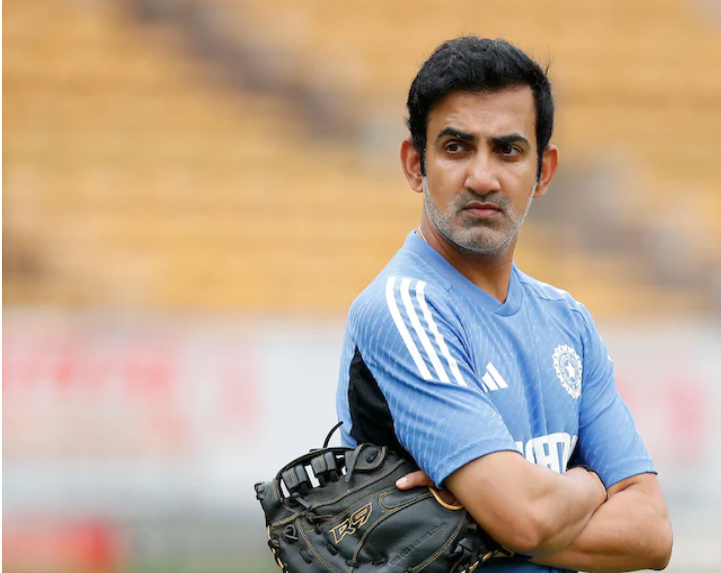
India’s recent 3-0 loss to New Zealand in the Test series has sparked heavy criticism of new head coach Gautam Gambhir. Known for his intense and uncompromising approach, Gambhir was expected to bring aggression and tactical sharpness to the Indian team. However, this whitewash against New Zealand has raised serious questions about his leadership style and strategic acumen, drawing inevitable comparisons with Greg Chappell, whose tenure as India’s coach was also marked by a controversial overhaul of team dynamics that led to divisive outcomes. Is Gambhir repeating the mistakes of Chappell, putting ideology before team unity and balance? Let’s take a closer look
Much like Greg Chappell, Gambhir’s coaching philosophy is marked by a strong-willed, no-nonsense approach. Chappell’s time with the Indian team (2005-2007) is often remembered for his authoritarian style and an inflexible vision, which ultimately resulted in his fallout with several senior players, including then-captain Sourav Ganguly. Chappell’s inability to manage egos and establish trust within the team led to a fractured locker room, which contributed to India’s dismal performance in the 2007 World Cup.
Similarly, Gambhir’s insistence on his own vision and preferred support staff has led to concerns that he is prioritizing control over adaptability. Reports indicate that he replaced several key support staff members with people from his IPL connections, which may have limited input from diverse perspectives within the team.
While he may feel comfortable with this team, the recent series loss suggests that this narrow circle may lack the experience and insight needed to guide the national team at the highest level.
Strategic Miscalculations: A Costly Experiment?
Chappell was infamous for his experimental tactics, such as changing batting orders without adequate preparation and pushing young, inexperienced players into key roles. His experiments were seen as too radical and destabilizing, especially when they didn’t yield consistent results. Gambhir’s tactical decisions in the New Zealand series have similarly come under fire. Critics argue that his strategic approach lacked coherence, and his decisions appeared rigid rather than adaptive to the game’s flow and players’ strengths.
Gambhir’s leadership during the New Zealand series saw a continued focus on aggressive play but little flexibility. Much like Chappell, Gambhir seems to be placing ideology—an insistence on aggression and intensity—above a more balanced and nuanced strategy. As a result, the team struggled under pressure, especially against disciplined and tactically sound New Zealand bowlers, who exploited weaknesses in India’s batting lineup. This stubborn adherence to aggression over adaptability has exposed the team’s vulnerability in Indian as well foreign territories
.
Team Morale and Player Relations: Chappell 2.0?
One of Chappell’s most criticized aspects was his relationship with the players. His inability to foster trust and respect within the squad led to a toxic environment. Gambhir’s appointment, while initially promising a strong, no-nonsense culture, now risks alienating players in a similar manner. Reports indicate that he has shown preference for certain players and staff, such as selection of Nitish Reddy who has no experience playing test cricket
As a 21-year-old, Nitish has a long way to go, but his record isn’t flattering at all. In September, he played in the Duleep Trophy and managed to take just 2 wickets in three matches while scoring just 63 runs at 15.75. Since then, he’s played one Ranji Trophy and one match against Australia A, with underwhelming results. He currently averages just over 20 in first-class with the bat. He’s found it tough to crack the code in List A as well, where his average is under 37.
This can lead to factionalism and undermine team unity. Moreover, his demanding leadership style might put undue pressure on younger players, impacting their confidence and performance.
There are whispers that some players may not be aligning well with Gambhir’s methods, which focus heavily on discipline but leave little room for adaptability or individual flair. This lack of flexibility could stifle players’ natural abilities, much like Chappell’s rigid approach did. Such issues, if unaddressed, could erode team morale and recreate the kind of fragmented atmosphere seen during Chappell’s tenure.
The Need for Balance: Learning from Chappell’s Mistakes
Gambhir’s vision for the Indian team, though commendable in its intent, seems to lack the balance needed to achieve sustained success. His singular focus on aggression and discipline mirrors Chappell’s approach but fails to recognize the value of adaptability and player morale. The New Zealand series has revealed gaps in India’s preparation, strategy, and overall team cohesion, reminiscent of the struggles seen under Chappell.
As India faces increasingly competitive international challenges, Gambhir must reassess his approach. Learning from Chappell’s tenure, he needs to foster an environment that allows for collaboration and flexibility. This might mean embracing a more inclusive leadership style, one that values input from a wider range of staff and respects players’ individual strengths. Only by doing so can Gambhir avoid the pitfalls of Chappell’s divisive reign and build a team that is cohesive, resilient, and capable of consistent success.
The early signs suggest that Gautam Gambhir could be headed down the same path as Greg Chappell, with his intense, uncompromising methods risking team cohesion and strategic adaptability. If Gambhir continues to prioritize ideology over a balanced approach, India could face a turbulent period, with players potentially struggling under the pressure of an unyielding coaching style. To avoid Chappell’s fate, Gambhir must adapt—fostering not just discipline, but also unity and tactical flexibility.
Ultimately, India’s future success will depend on Gambhir’s ability to evolve his coaching style, learning from past failures. The fans and players alike hope he can find the balance that has eluded similar hard-line coaches in the past. The recent New Zealand series loss should serve as a wake-up call, signaling the urgent need for a more flexible and inclusive approach if Gambhir is to truly lead India to greater heights.
Leave a Reply